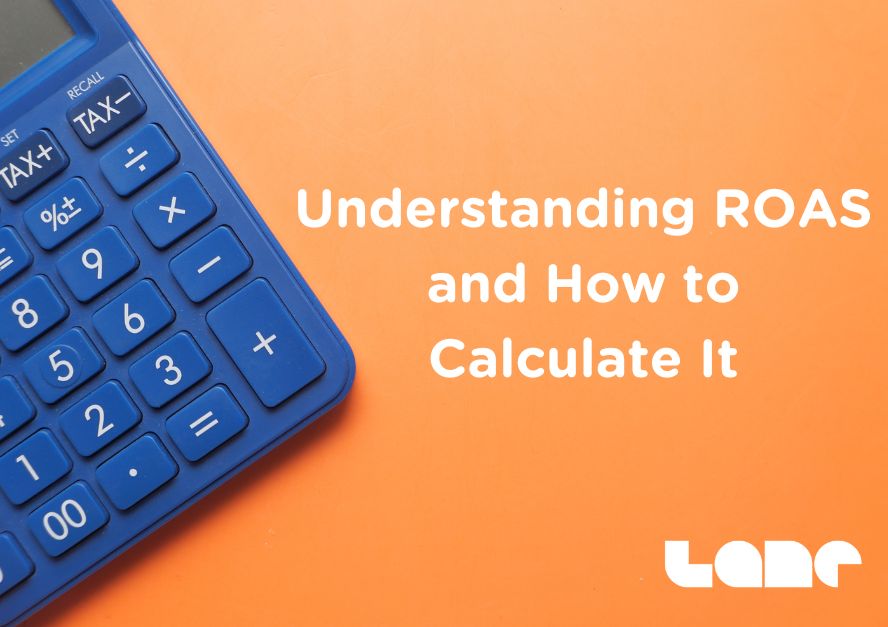Understanding ROAS and How to Calculate It with a Free Calculator
Liam Hall • 27th Mar 2023

As a business owner or marketer, one of the key goals of your advertising efforts is to maximise your return on investment (ROI). To achieve this, it’s important to understand a key metric known as return on ad spend (ROAS). In this blog, we’ll explore what ROAS is, why it’s important, and how you can calculate it using our free calculator.
What is ROAS?
ROAS is a metric that measures the effectiveness of your advertising campaigns by calculating the revenue generated from your ads compared to the amount spent on those ads. In simple terms, ROAS is the ratio of revenue to ad spend. For example, if you spend £100 on advertising and generate £500 in revenue, your ROAS would be 5:1.
Why is ROAS Important?
ROAS is an important metric because it provides a clear indication of the effectiveness of your advertising campaigns. By measuring the revenue generated from your ads compared to the amount spent, you can determine which campaigns are delivering the best return on investment and adjust your advertising strategy accordingly. By focusing on campaigns with a high ROAS, you can maximise your advertising efforts and improve your overall ROI.
How to Calculate ROAS
Calculating ROAS is simple. To calculate your ROAS, you need to divide your revenue by your ad spend. The formula for calculating ROAS is:
ROAS = Revenue / Ad Spend
For example, if you spend £500 on advertising and generate £2,000 in revenue, your ROAS would be:
ROAS = £2,000 / £500 ROAS = 4:1
This means that for every pound you spend on advertising, you generate £4 in revenue.
What is a Good ROAS?
Determining what is considered a good ROAS can be tricky as it depends on several factors such as the advertising channel, profit margin, and business goals. For example, a ROAS of 2:1 may be considered good for a social media advertising campaign, but for a Google search ad, a ROAS of 5:1 may be more desirable. The reason for this is that different advertising channels have varying costs and conversion rates, which can affect the ROAS. Additionally, it’s important to consider the profit margin of the product or service being sold, as a lower profit margin may require a higher ROAS to make a campaign profitable. Therefore, it’s essential for businesses to consider their unique circumstances when determining what a good ROAS is and to set realistic expectations for their campaigns.
Why ROAS Is Not the Only Metric You Need to Measure
While ROAS is an important metric to evaluate advertising effectiveness, it should not be the only factor considered. It’s essential to also consider the lifetime value of customers acquired through paid media, as the cost to acquire a customer may be higher than the immediate revenue generated but can lead to greater long-term profitability. For example, a customer who makes a one-time purchase may not be as valuable as a customer who becomes a repeat purchaser or refers others to the business. Therefore, businesses should consider both ROAS and customer lifetime value when evaluating the effectiveness of their advertising campaigns. By doing so, they can make more informed decisions about their advertising strategy and focus on campaigns that not only generate immediate revenue but also lead to long-term growth and profitability.
What Is the Difference Between ROAS and ROI?
ROAS and ROI are different metrics because they measure different aspects of financial performance. ROAS is focused solely on measuring the effectiveness of advertising campaigns, while ROI takes a more holistic approach by measuring the overall profitability of an investment. ROAS looks at the revenue generated by an advertising campaign relative to the amount of money spent on that campaign, which helps advertisers understand how efficiently their advertising spend is being used. ROI, on the other hand, considers all costs and revenue generated by an investment, including production costs, overhead, and other expenses, to determine the overall profitability of that investment. By using both ROAS and ROI, businesses can gain a comprehensive understanding of the effectiveness and profitability of their advertising and other investments, allowing them to make informed decisions about future investments.
Using Our Free ROAS Calculator
Calculating ROAS manually can be time-consuming, especially if you have multiple advertising campaigns to measure.
To use our handy ROAS calculator, all you need to do is enter the revenue generated from your ads and the amount spent on those ads. The calculator will then automatically calculate your ROAS and display the results.
In conclusion, understanding ROAS and how to calculate it is an essential part of any advertising strategy. By measuring the effectiveness of your advertising campaigns, you can identify which campaigns are generating the best return on investment and adjust your strategy accordingly. However, it’s important to remember that what is considered a good ROAS depends on several factors such as the advertising channel, profit margin, and business goals. Additionally, while ROAS is an important metric, it should not be the only factor considered, as businesses should also consider the lifetime value of customers acquired through paid media. By using both ROAS and ROI metrics, businesses can gain a comprehensive understanding of the effectiveness and profitability of their advertising efforts, enabling them to make informed decisions about future investments.
If you think your business could benefit from a new or improved Paid Media strategy, get in touch today for a FREE account audit – we’re always up for a new challenge.


